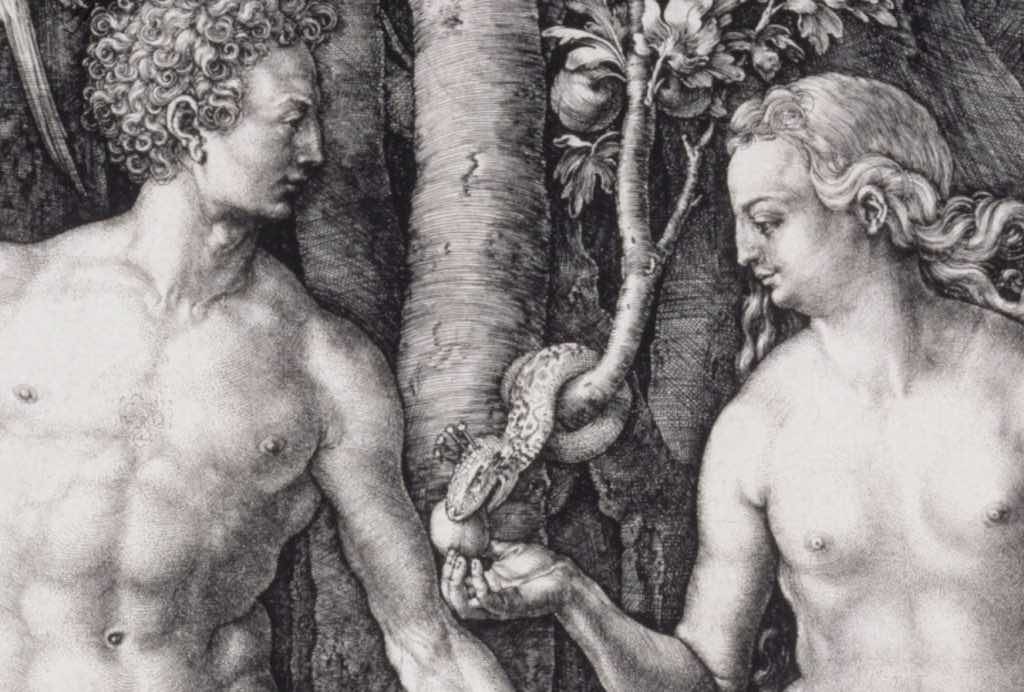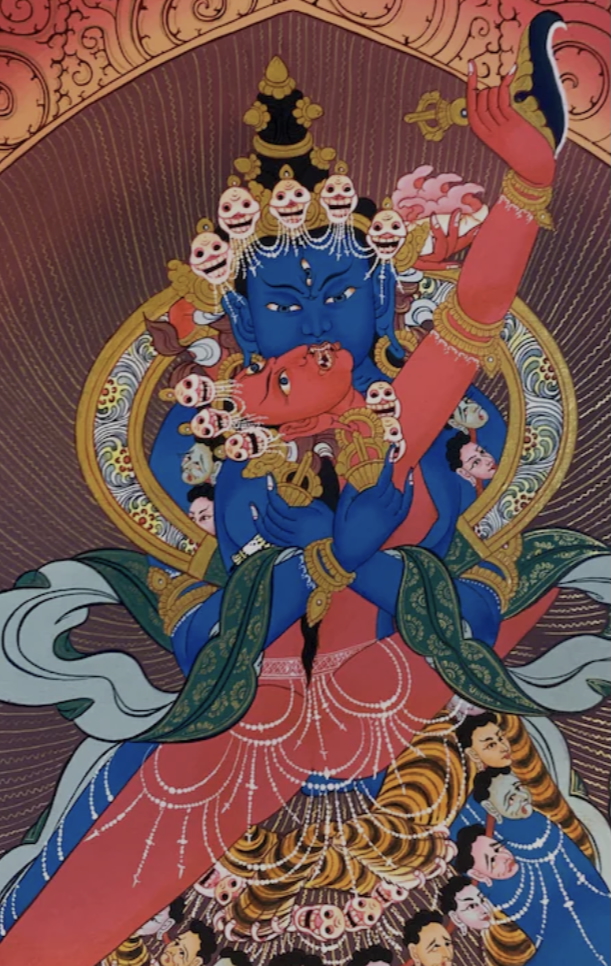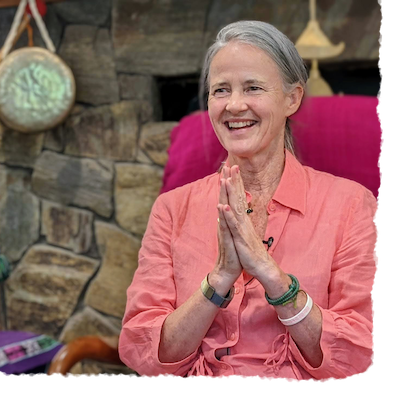
November, 2025
by Qapel (Acharya Doug Duncan)

This article was written by Qapel in 2016, and recently re-discovered by Catherine Sensei. We are delighted to be able to publish it here and share a previously unpublished precious gem of Qapel’s teaching.
– Planet Dharma
Life is a Weaving
Life is a tapestry. It is a weaving, of sensations, feelings and thoughts. It is a rich and wonderful experience of blissful diversity and strangeness that we often lose sight of in the hubbub of our daily concerns. Life is a weaving (tantra in Sanskrit) together of many threads of individual moments and events that create the diversity and wonderfulness of our day-to-day lives.
What a wonder to behold is a stunning sunset, a lightning storm over the prairies, the smile of a child looking at a flower or an elderly ‘dinosaur’ figuring out how to post something on social media.
We are hurled from the womb to the tomb, often forgetting just how fleeting our days on this jeweled globe floating in space that we call our planet. Our lives are far too precious to waste in sorrow and sadness, in fretting over lost moments or missed opportunities.
Too many of us chasing something ‘more’ miss the beauty of what is. We also lose track of the fact that career and relationships are the core of human experience and that entertainment is something we do together.


Buddhist Approaches to Desire
Buddhists recognize that the struggles of life we often get immersed in cause us to forget the truly awesome thing life is. They see the cause of our forgetting is our attachment to things while simultaneously trying to nail life down. They chose to renounce the clinging that causes misery in order to rediscover the bliss of letting go.
They follow the threads of desire that can reveal our basic awareness that in the letting go of attachment we discover freedom and the appreciation of life that results in loving-kindness. With loving kindness in our hearts compassion becomes the manifestation of our actions.
Tantric meditation that is practiced either as a contemplation or in the form of action, karma yoga, employs all our senses. We rediscover the beauty and majesty of smell, taste, sounds, sight and touch sensations that color our world. Combining all of these senses in images of radiant energy, symbolized in human form so we can relate to them better, the mind observes the attractions or repulsions in their ever shifting and ephemeral nature.
Consciousness has three aspects. There is an organ, say a nose, there is an object, perhaps a rose and there is an interaction we call smell. Knowing these three reveals the nature of experience.
Using the duality of male and female as a metaphor for consciousness’s ability to perceive events we experience how desire can trigger clinging. If I am the male (organ) and she is the female (object) then the interaction is consciousness of gender. Consciousness of gender is an example of our sixth sense, mind.
“This path is called tantra and the basic idea is to use desire itself to liberate the attachment to desire that results in our dissatisfaction.“
The Tantric Path
While some try to overcome clinging by renouncing the desire itself others use the desire as a study of clinging. They engage the desire in order to transcend it. Transcending desire means allowing consciousness to see the spaciousness in the mind that the desire itself, in a sense, can’t touch. They use the desire itself to liberate the struggle of clinging.
Perhaps it is a more difficult path since we tend to get caught up in our desires that end up in attachment that is the source of suffering. But it is also a richer and more integrated path as we can use our full human potential and capabilities to rediscover wonderment without the clinging that causes suffering.
This path is called tantra and the basic idea is to use desire itself to liberate the attachment to desire that results in our dissatisfaction. Risky business perhaps but also way more fun!
Life is duality and the most basic one is male and female. It is the source of life that drives us to seek partners and relationships. Tantric Buddhists use this core drive and appetite to represent all of life’s relativities. By mapping the dialogue of male/female and the attachments that ensue we are mapping all attachments. By liberating this attachment we liberate all attachments.


The Four Stages of Tantric Practice
Traditionally tantrikas depict four stages in the process of desire represented by the male/female dance. In mapping this dance we also unveil the 9 emotions associated with the being that liberates themselves of attachment even while engaging in desire.
Stage one, Action Yoga, is the smile. Girl looks at boy, boy looks at girl and they smile. A smile is an invitation and an invitation opens the door of desire. Every woman knows a smile is an invitation and every man hopes his smile will be returned. However, a smile is distant. There is still a lot of room between them and us.
The second stage is called Relating Tantra and is traditionally depicted as the couple holding hands. The stakes have risen. It takes more commitment, more trust, greater investment and thus more to lose in this stage. Relationship is now on the table so therefore are our hopes and fears. Hopes and fears are rooted in habits and habits are rooted in attachments.
The third stage, Joining Tantra, is kissing and making out. We don’t do this with strangers. Intimacy, if it is going to happen, opens us to greater vulnerability and defenselessness. This degree of relationship gets under our skin as it were. We can be hurt and our core attachments are revealed. Because of this, not clinging here is a far bigger challenge than not clinging at Action tantra.
Lastly with Union Tantra (Anuttara Yoga) we are in full and complete contact that is symbolically depicted as sexual union. We are wide open to experience and not trying to hold on to it or its objects even for an instance but we are also fully committed and fully engaged.
The path of tantra then is one of gradually revealing and uncovering ever deeper layers of attachment and clinging that we let go of. In union self and other disappear and we enter a liminal bliss and clarity untrammeled by separation and protectionism. In a sense we are no longer there – what Buddhists call no-self.
In meditation or karma yoga (meditation in action) we visualize this symbolic process enjoining our senses and desires to observe where we get attached (or repulsed) because of clinging to the most fundamental of desires.
Our most fundamental desire, like Narcissus who fell in love with his own image and drowned, is our sense of self. The suffering comes as our need to defend or promote this ‘lover’ of ourselves is rooted in attachment and clinging and thus in essence is the source of all our woe.
Tantra gives us the tool to learn to love without attachment, engage without clinging to agenda, experience without trying to hang on, to live without regret or sorrow, and, in the end, to die smiling.




